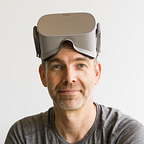Perceived Weakness is Actual Strength
This is in an excerpt from Talking Mimes Talks to Idealog, which is the raw interview for the Idealog article White-Mirror-Episode-Two-Mindedness.
5. What’s the most profound thing you’ve experienced in your work with Thought-Wired/Talking Mimes?
[It’s important to preface this answer with: This is not to minimise the extreme challenges and frustrations created by our inaccessible world.]
Maybe it’s because I’m primed for it, but I see profound examples of “strength from weakness” or “perceived weakness is actual strength” in the disability community all the time.
One that’s stuck with me is a story from a friend and colleague who is non-verbal due to CP. A friend of hers was severely depressed, had attempted suicide a couple of times, and looked to her as a confidante. Because using her communication device was slow, she was unable to respond quickly. This made her a superb listener, who chose her words carefully, and never interrupted. While she was frightened that she was letting her friend down, by failing to respond in detail, her friend (who survived and went on to become a crisis counselor) later confided to her that she had helped her greatly through her listening and support. In my friend’s words: “Sometimes no words are better than a lot of meaningless words”.
Then there’s the late Stephen Hawking’s phenomenal brain. His disability forced him to do complex modelling in his head that his theoretical physicist contemporaries could hand off to a computer simulation — bashing out code with a keyboard. Because he had to keep it all in his head, Stephen was able to make leaps of intuitive genius that others just couldn’t see. They entrusted much of the work to an external device and dealt with information piecemeal in their minds, while Stephen saw the whole system at once.
Or Kiwi, David John O’Connor, who was paralysed from the neck down in a rock-climbing incident. In his superb words: “If regaining my physical wholeness meant that I must lose the mental and emotional lessons I have learned through the suffering and the anguish, I would not want to change. I am more complete and whole as a person now than at any time before my injury. I have achieved a knowledge of self that illuminates everything clearly. It is like a key that unlocks a chest full of priceless treasures. It is the paradox of my disability.”
More generally, there’s the example of the super human listening speed of people who are blind. Hearing a screen reader set by someone who’s been blind for a while, to my sight-hindered ears it’s an incomprehensible blur of noise. Parts of their cortex that would otherwise be used to process light have been remapped for sound, allowing them to attain listening speeds of 800 words per minute. So, people with vision impairments can take in information even faster than Bill Gates. For comparison, the average person speaks at 120wpm and reads visually at around 250wpm.
